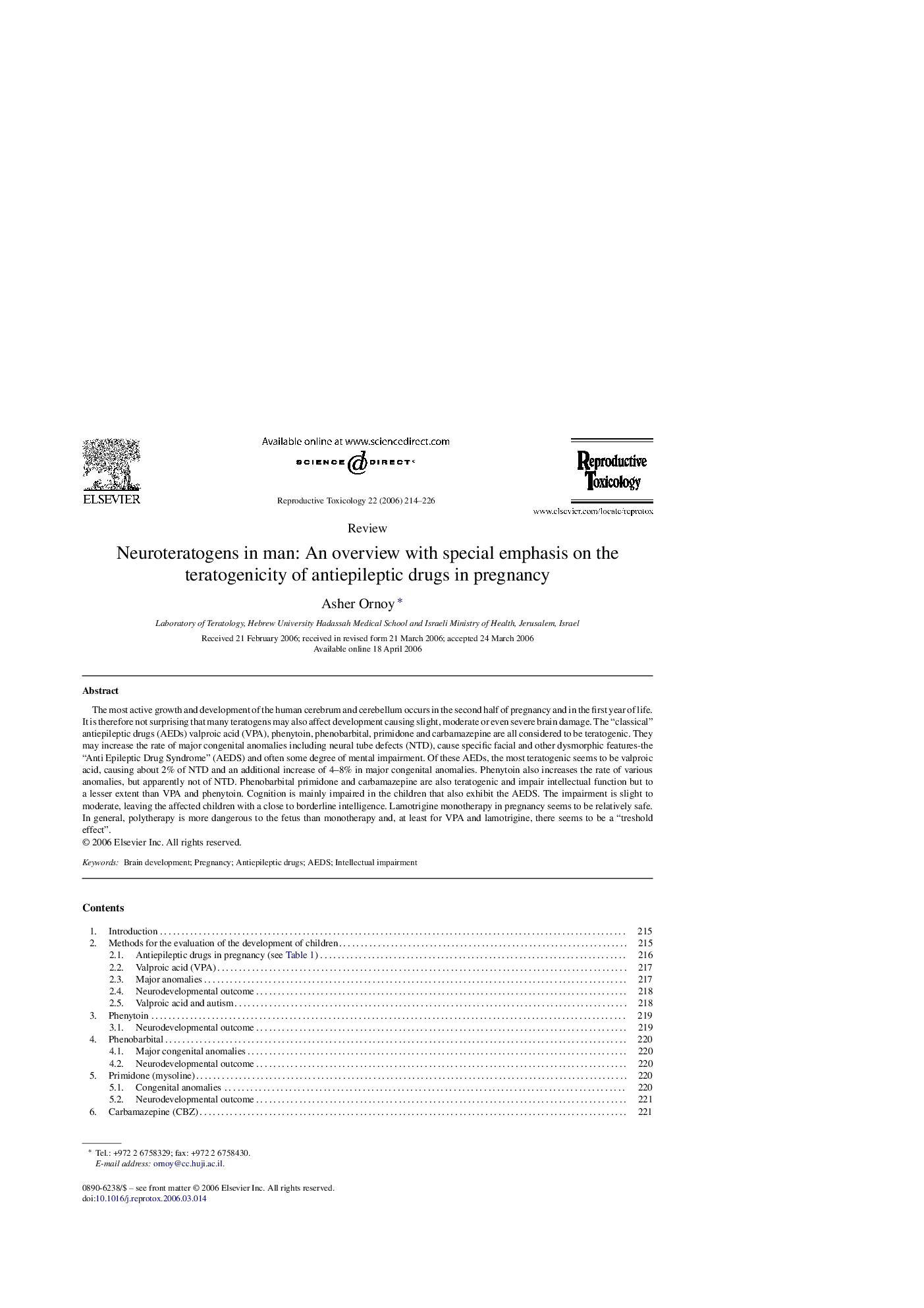| Article ID | Journal | Published Year | Pages | File Type |
|---|---|---|---|---|
| 2594873 | Reproductive Toxicology | 2006 | 13 Pages |
The most active growth and development of the human cerebrum and cerebellum occurs in the second half of pregnancy and in the first year of life. It is therefore not surprising that many teratogens may also affect development causing slight, moderate or even severe brain damage. The “classical” antiepileptic drugs (AEDs) valproic acid (VPA), phenytoin, phenobarbital, primidone and carbamazepine are all considered to be teratogenic. They may increase the rate of major congenital anomalies including neural tube defects (NTD), cause specific facial and other dysmorphic features-the “Anti Epileptic Drug Syndrome” (AEDS) and often some degree of mental impairment. Of these AEDs, the most teratogenic seems to be valproic acid, causing about 2% of NTD and an additional increase of 4–8% in major congenital anomalies. Phenytoin also increases the rate of various anomalies, but apparently not of NTD. Phenobarbital primidone and carbamazepine are also teratogenic and impair intellectual function but to a lesser extent than VPA and phenytoin. Cognition is mainly impaired in the children that also exhibit the AEDS. The impairment is slight to moderate, leaving the affected children with a close to borderline intelligence. Lamotrigine monotherapy in pregnancy seems to be relatively safe. In general, polytherapy is more dangerous to the fetus than monotherapy and, at least for VPA and lamotrigine, there seems to be a “treshold effect”.
